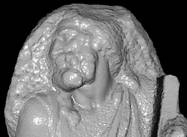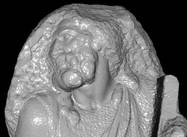QSplat: A Multiresolution Point Rendering System for Large Meshes
Proceedings of ACM SIGGRAPH 2000, July 2000
Abstract
Advances in 3D scanning technologies have enabled the practical creation of meshes with hundreds of millions of polygons. Traditional algorithms for display, simplification, and progressive transmission of meshes are impractical for data sets of this size. We describe a system for representing and progressively displaying these meshes that combines a multiresolution hierarchy based on bounding spheres with a rendering system based on points. A single data structure is used for view frustum culling, backface culling, level-of-detail selection, and rendering. The representation is compact and can be computed quickly, making it suitable for large data sets. Our implementation, written for use in a large-scale 3D digitization project, launches quickly, maintains a user-settable interactive frame rate regardless of object complexity or camera position, yields reasonable image quality during motion, and refines progressively when idle to a high final image quality. We have demonstrated the system on scanned models containing hundreds of millions of samples.
Paper
Talk
Links
- Project page (includes links to code and models)
Citation
Szymon Rusinkiewicz and Marc Levoy.
"QSplat: A Multiresolution Point Rendering System for Large Meshes."
Proceedings of ACM SIGGRAPH 2000, pp. 343-352, July 2000.
BibTeX
@inproceedings{Rusinkiewicz:2000:QAM,
author = "Szymon Rusinkiewicz and Marc Levoy",
title = "{QSplat}: A Multiresolution Point Rendering System for Large Meshes",
booktitle = "Proceedings of ACM SIGGRAPH 2000",
year = "2000",
month = jul,
pages = "343--352"
}



